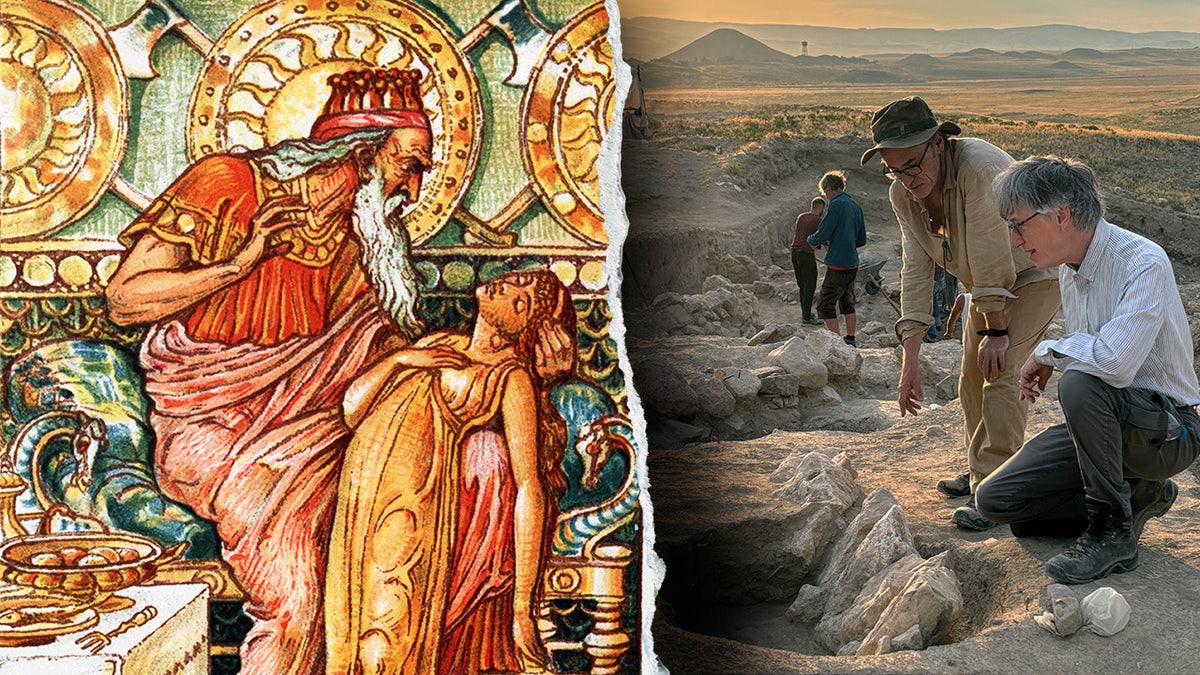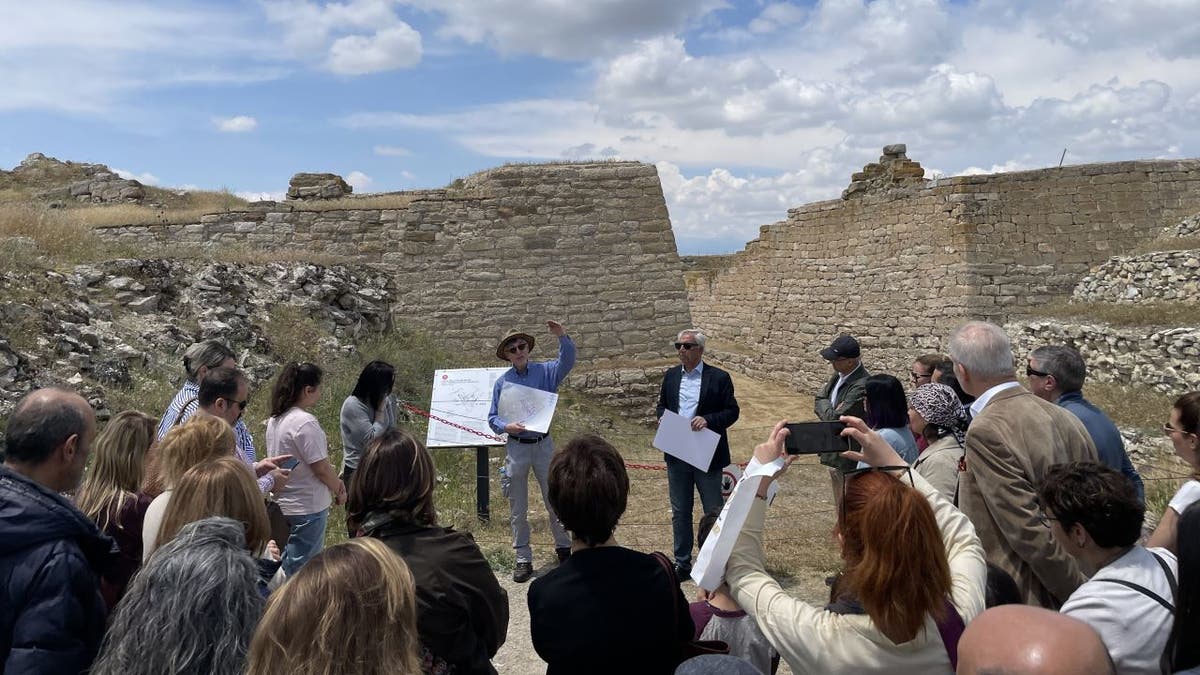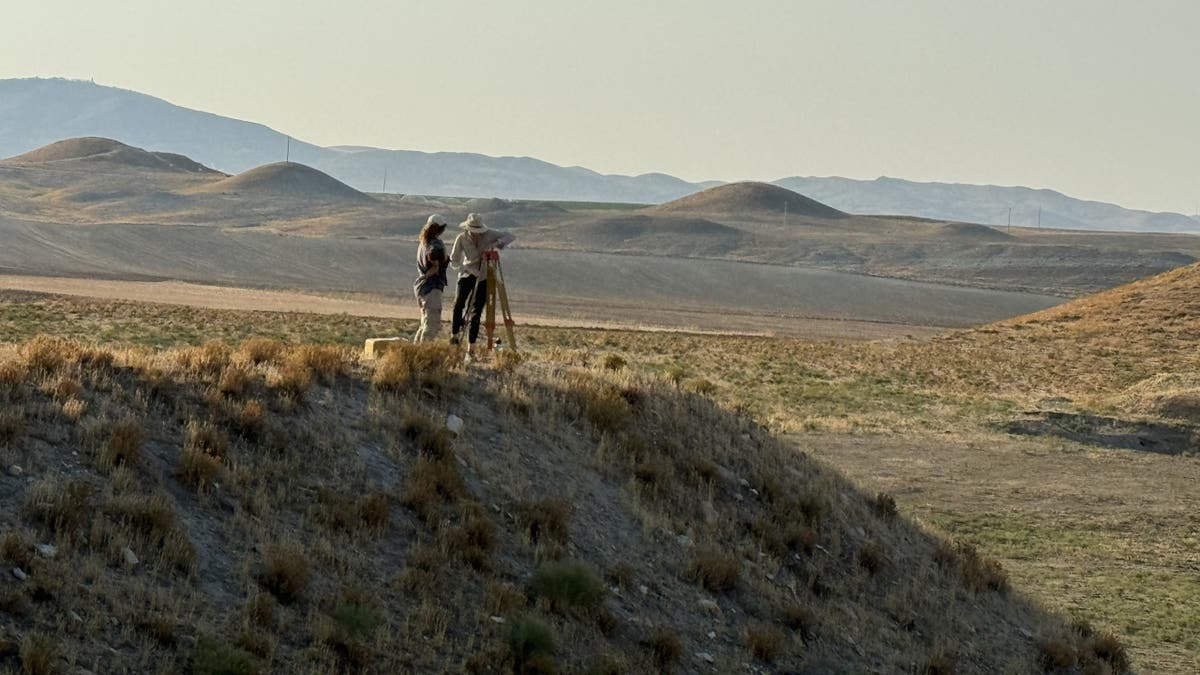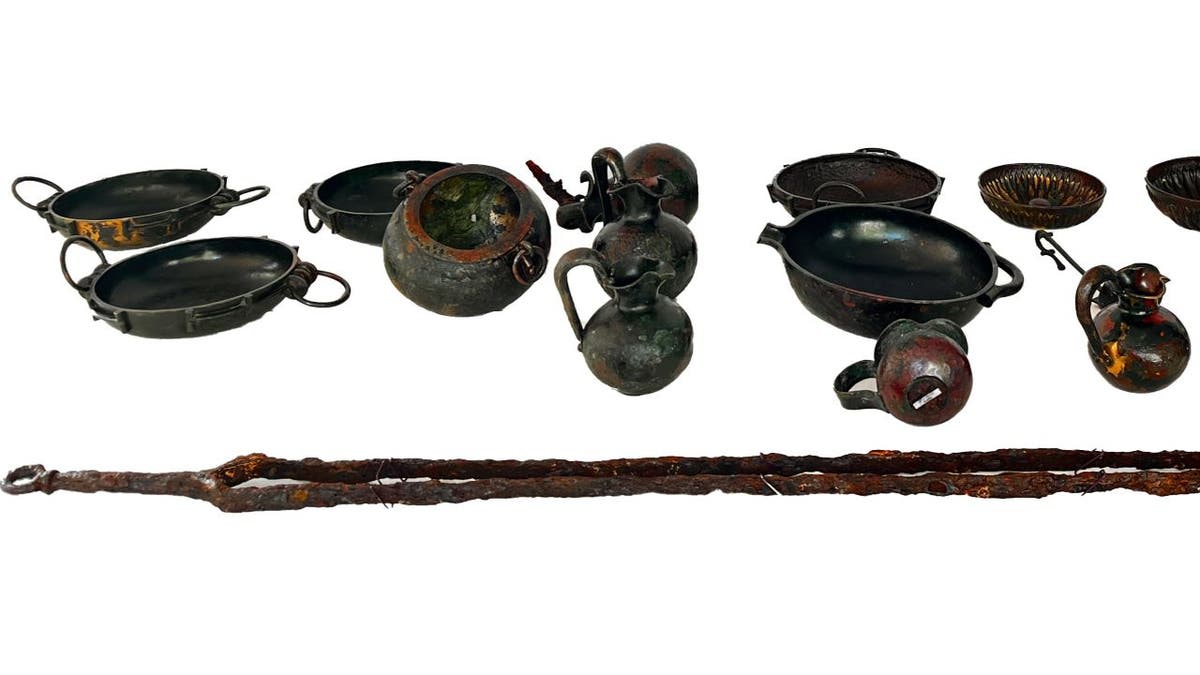

A tomb likely linked to the family of King Midas was recently uncovered in Turkey — offering more details about life during the reign of the legendary leader.
The discovery was made at the Gordion archaeological site some 60 miles southwest of the Turkish capital of Ankara. The royal tomb dates to the 8th century B.C. and was found after a grueling four months of excavating.
Gordion was the capital of the Phrygian kingdom, which controlled most of western and central Anatolia in the first millennium B.C.
Its most famous king is King Midas, the ruler known for his "golden touch." He controlled the kingdom between 740 and 700 B.C.
With the burial chamber dating back to 750 B.C., evidence suggests the new discovery belonged to his family.

Archaeologists have found dozens of rare artifacts and ancient cremated bones in a grave linked to King Midas' family. (Penn Museum Gordion Archaeological Project)
University of Pennsylvania professor C. Brian Rose, who directs excavations at the site, spoke with Fox News Digital about the recent discovery.
The tomb, dubbed Tumulus T-26, contained a great display of wealth, including various well-preserved bronze objects and iron tools, said the historian.
Interestingly, the remains of the decedent were also cremated.
"Royal tombs are often organized in clusters, so it seems likely that the newly excavated tombs belonged to his family."
Rose said the bronze vessels "attest to a high level of wealth," on top of the tomb's proximity to the burial mound of Midas' father.
"Royal tombs are often organized in clusters, so it seems likely that the newly excavated tombs belonged to his family," he said.
Miraculously, the royal chamber was untouched by burglars, so several artifacts were still intact.

University of Pennsylvania professor C. Brian Rose (center), who has been the director of fieldwork at Gordion since 2013, helped find the royal tomb. (Penn Museum Gordion Archaeological Project)
A notable find was a pair of large bronze cauldrons that were used to serve food and drink during a funeral feast.
Rose said that although no food residue was found on the vessels, previous discoveries at the site have shed light on what ancient Phrygians ate.
ARCHAEOLOGISTS UNCOVER PROOF OF ANCIENT BIBLICAL BATTLE AT ARMAGEDDON SITE: 'EXCEPTIONAL PHENOMENON'
"There was surviving food residue from the funeral ceremony of Midas’ father in 740 BCE," he noted.
"We therefore know that they served a spicy lentil and barbecued sheep or goat stew that was washed down with an alcoholic beverage – a mixture of grape wine, barley beer and honey mead."
He added, "Some of the vessels had wax strips applied to their sides and the name of the owner was written. If you put your bowl down, you could easily find it again."

The new T-26 burial site is connected in some way with Midas' family or his associates based on archaeological evidence, said experts. (Penn Museum Gordion Archaeological Project)
The recent find follows others made at the same archaeological site.
Archaeologists previously found a burial named Tumulus T-52, which housed over 3,000 amber beads.
For more Lifestyle articles, visit foxnews.com/lifestyle
While the bronze objects in Tumulus T-26 indicate wealth, Rose said the discovery of the beads in Tumulus T-52 was unprecedented.
"This constitutes one of the largest assemblages of amber found anywhere in the ancient world, and scientific testing shows that it was imported from the Baltic," he noted.
"This is the kind of feature that one would expect in a royal assemblage, and the discovery supplies welcome information regarding the long-distance trade networks to which Gordion was connected."

The bronze objects in Tumulus T-26 signify a great amount of wealth, experts say. (Penn Museum Gordion Archaeological Project)
Archaeologists across the world uncover an untold number of ancient tombs every year – and some are lucky enough to find well-preserved artifacts, too.
Last month, Egyptian officials announced the discovery of several high-ranking Ancient Egyptian officials' tombs.
In Syria, a contractor recently stumbled across an expensive Christian tomb complex dating back to the Byzantine Empire.
